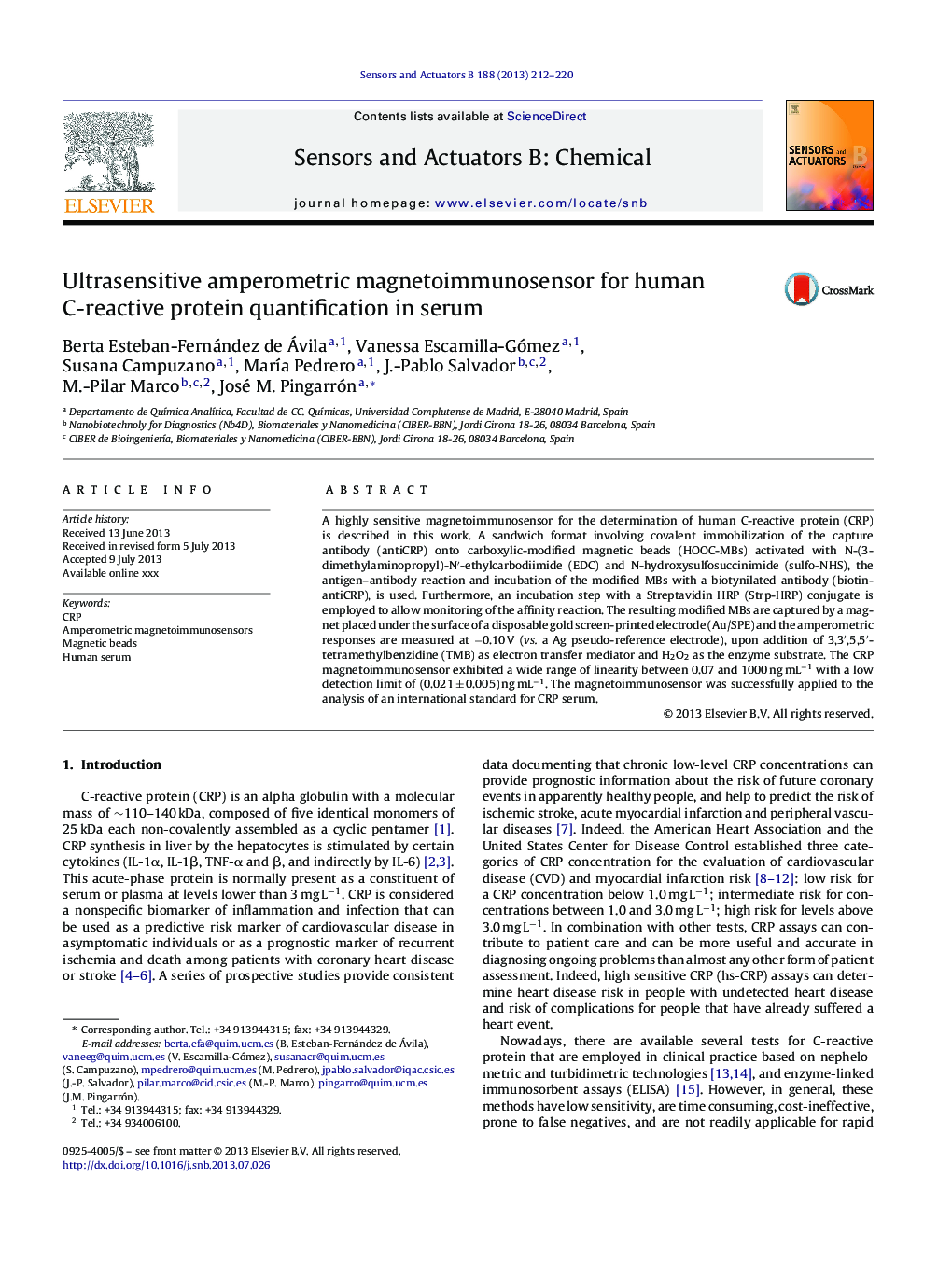| Article ID | Journal | Published Year | Pages | File Type |
|---|---|---|---|---|
| 7148197 | Sensors and Actuators B: Chemical | 2013 | 9 Pages |
Abstract
A highly sensitive magnetoimmunosensor for the determination of human C-reactive protein (CRP) is described in this work. A sandwich format involving covalent immobilization of the capture antibody (antiCRP) onto carboxylic-modified magnetic beads (HOOC-MBs) activated with N-(3-dimethylaminopropyl)-Nâ²-ethylcarbodiimide (EDC) and N-hydroxysulfosuccinimide (sulfo-NHS), the antigen-antibody reaction and incubation of the modified MBs with a biotynilated antibody (biotin-antiCRP), is used. Furthermore, an incubation step with a Streptavidin HRP (Strp-HRP) conjugate is employed to allow monitoring of the affinity reaction. The resulting modified MBs are captured by a magnet placed under the surface of a disposable gold screen-printed electrode (Au/SPE) and the amperometric responses are measured at â0.10 V (vs. a Ag pseudo-reference electrode), upon addition of 3,3â²,5,5â²-tetramethylbenzidine (TMB) as electron transfer mediator and H2O2 as the enzyme substrate. The CRP magnetoimmunosensor exhibited a wide range of linearity between 0.07 and 1000 ng mLâ1 with a low detection limit of (0.021 ± 0.005) ng mLâ1. The magnetoimmunosensor was successfully applied to the analysis of an international standard for CRP serum.
Keywords
Related Topics
Physical Sciences and Engineering
Chemistry
Analytical Chemistry
Authors
Berta Esteban-Fernández de Ávila, Vanessa Escamilla-Gómez, Susana Campuzano, MarÃa Pedrero, J.-Pablo Salvador, M.-Pilar Marco, José M. Pingarrón,
